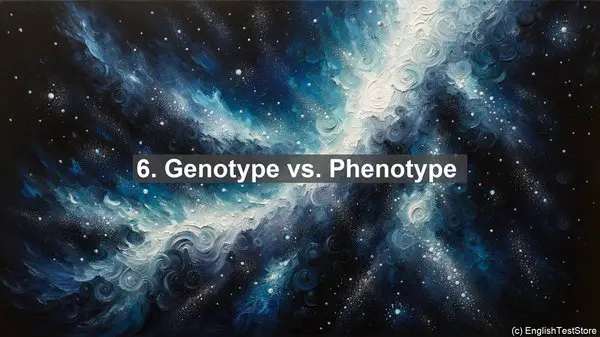Introduction
Welcome to today’s lesson on psychobiology. In this lesson, we’ll be focusing on something that often trips up even the most seasoned researchers and scholars – commonly confused words. Understanding the nuances of these terms is crucial for accurate communication in the field. So, let’s dive right in!

1. Nature vs. Nurture
The age-old debate in psychobiology revolves around the influence of nature (genetics) and nurture (environment) on an individual’s traits and behaviors. While nature refers to the genetic predispositions we inherit, nurture encompasses the environmental factors that shape us. It’s important to remember that most psychological phenomena are influenced by a complex interplay of both factors, rather than being solely determined by one or the other.
2. Conscious vs. Unconscious
The conscious mind is the realm of our immediate awareness, where our thoughts, perceptions, and feelings occur. On the other hand, the unconscious mind operates beneath our conscious awareness, influencing our behavior in subtle ways. It’s like the tip of the iceberg (conscious) versus the vast hidden portion beneath the surface (unconscious). Both realms are integral to understanding human cognition and behavior.
3. Stimulus vs. Response
In psychobiology, we often study the relationship between a stimulus and the subsequent response. A stimulus is any external event or input that elicits a reaction, while a response is the organism’s observable behavior or physiological change. The study of this stimulus-response (S-R) connection forms the basis of many behavioral and cognitive theories.
4. Sensation vs. Perception
While these terms are often used interchangeably in everyday language, they have distinct meanings in psychobiology. Sensation refers to the process of detecting and encoding sensory information from the environment, such as seeing a color or feeling a touch. Perception, on the other hand, involves the interpretation and organization of this sensory input, allowing us to make sense of the world around us.
5. Classical vs. Operant Conditioning
Both classical and operant conditioning are forms of learning, but they differ in their underlying mechanisms. Classical conditioning involves the association of two stimuli, where a previously neutral stimulus comes to elicit a response due to its repeated pairing with an unconditioned stimulus. Operant conditioning, on the other hand, focuses on the consequences of behavior, with reinforcement and punishment shaping future actions.
6. Genotype vs. Phenotype
In the study of genetics, we often distinguish between an organism’s genotype and phenotype. The genotype refers to the genetic makeup or the specific combination of genes an individual possesses. The phenotype, on the other hand, is the observable characteristics or traits that result from the interaction between the genotype and the environment. It’s the interplay between these two factors that determines an organism’s traits.
7. Neurotransmitter vs. Hormone
Neurotransmitters and hormones are both chemical messengers in the body, but they differ in their mode of action. Neurotransmitters are released by neurons and act locally, transmitting signals across synapses. In contrast, hormones are secreted by endocrine glands and travel through the bloodstream to target distant organs or tissues. Both systems play crucial roles in regulating various physiological and behavioral processes.
8. Correlation vs. Causation
When examining the relationship between two variables, it’s important to differentiate between correlation and causation. Correlation simply indicates a statistical relationship, where changes in one variable are associated with changes in another. Causation, on the other hand, implies a cause-and-effect relationship, where one variable directly influences the other. Establishing causation requires rigorous experimental designs and control of confounding factors.

9. Prevalence vs. Incidence
In epidemiology, we often quantify the occurrence of diseases or conditions using prevalence and incidence. Prevalence refers to the total number of cases in a population at a given time, providing an estimate of the burden of the condition. Incidence, on the other hand, measures the number of new cases that develop within a specific time period, giving insights into the risk or rate of occurrence.
10. Sensitivity vs. Specificity
When evaluating the accuracy of a diagnostic test, we consider both sensitivity and specificity. Sensitivity measures the test’s ability to correctly identify individuals with the condition, minimizing false negatives. Specificity, on the other hand, assesses the test’s ability to correctly identify individuals without the condition, reducing false positives. A balance between these two measures is crucial for an effective diagnostic tool.
